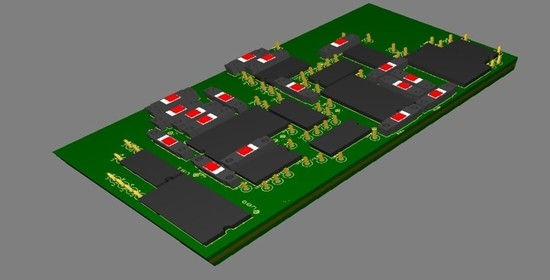Development of a Process Control System for the Production of High-Paraffin Oil
Abstract
:1. Introduction
2. Materials and Methods
2.1. Existing Solution Method
2.2. Mathematical Model Development
2.3. Simulation Method
3. Results
3.1. Numerical Example
3.2. Thermodynamic Properties
4. Conclusions
Funding
Institutional Review Board Statement
Informed Consent Statement
Data Availability Statement
Conflicts of Interest
Nomenclature
| T | temperature |
| t | time |
| r | the diameter of the tubing |
| T(x,r,t) | temperature field of the object of study (in one-dimensional form) |
| T(x,y,t) | temperature field of the research object (in two-dimensional form) |
| T(x,y,z,t) | temperature field of the research object (in three-dimensional form) |
| a2 | the specified coefficient of thermal diffusivity of the material |
| i | the serial number of the heating element |
| j | the serial number of the temperature sensor |
| l1, l2, l3 | spatial coordinates of the control object |
| u(x,t) | control action |
| x,y,z | measurement point coordinates |
| Θ | rotation angle |
| r | tubing inner radius |
| R | tubing outer radius |
| W(p) | transfer function |
| n1 | given number |
| s | vector |
References
- Lira-Galeana, C.; Hammami, A. Chapter 21 Wax Precipitation from Petroleum Fluids: A Review. Dev. Pet. Sci. Part B 2000, 40, 557–608. [Google Scholar] [CrossRef]
- Girma, T.C.; Sulaiman, S.A.; Japper-Jaafar, A.; Wan Ahmad, W.A.K. Mior Maarof Mior Mokhtar, Gas void formation in statically cooled waxy crude oil. Int. J. Ther. Sci. 2014, 86, 41–47. [Google Scholar] [CrossRef]
- Li, W.; Huang, Q.; Dong, X.; Gao, X.; Hou, L.; Wang, W. A theoretical model for predicting the wax breaking force during pipeline pigging. J. Pet. Sci. Eng. 2018, 169, 654–662. [Google Scholar] [CrossRef]
- Li, W.; Huang, Q.; Wang, W.; Dong, X.; Gao, X.; Hou, L. Estimating the wax breaking force and wax removal efficiency of cup pig using orthogonal cutting and slip-line field theory. Fuel 2019, 236, 1529–1539. [Google Scholar] [CrossRef]
- Nikolaev, A.K.; Dokoukin, V.P.; Lykov, Y.V.; Fetisov, V.G. Research of processes of heat exchange in horizontal pipeline. IOP Conf. Ser. Mater. Sci. Eng. 2018, 327, 032041. [Google Scholar] [CrossRef]
- Litvinenko, V.S.; Dvoynikov, M.V. Monitoring and Control of the Drilling String and Bottomhole Motor Work Dynamics. In Balkema Topical Issues of Rational Use of Natural Resources; CRC Press: Leiden, The Netherlands, 2019; Volume 1, pp. 804–809. [Google Scholar] [CrossRef]
- Litvinenko, V.S. Technological Progress Having Impact on Coal Demand Growth. In XVIII International Coal Preparation Congress; Springer: Cham, Switzerland, 2016; pp. 1–8. [Google Scholar] [CrossRef]
- Pashkevich, N.V.; Tarabarinova, T.A.; Golovina, E. Problems of Reflecting Information on Subsoil Assets in International Financial Reporting Standards. Acad. Strateg. Manag. J. 2018, 17, 1–4. [Google Scholar]
- Girma, T.C.; Sulaiman, S.A.; Japper-Jaafar, A. Flow start-up and transportation of waxy crude oil in pipelines-A review. J. Non-Newton. Fluid Mech. 2018, 251, 69–87. [Google Scholar] [CrossRef]
- Li, N.; Mao, G.L.; Shi, X.Z.; Tian, S.W.; Liu, Y. Advances in the research of polymeric pour point depressant for waxy crude oil. J. Dispers. Sci. Technol. 2018, 39, 1165–1171. [Google Scholar] [CrossRef]
- Elbanna, S.A.; Abd El Rhman, A.M.; Al-Hussaini, A.S.; Salah, A.K. Synthesis, characterization, and performance evaluation of novel terpolymers as pour point depressors and paraffin inhibitors for Egyptian waxy crude oil. Pet. Sci. Technol. 2022, 40, 2263–2283. [Google Scholar] [CrossRef]
- AlSabagh, A.M.; Abdel-Hamid, T.M.; Helal, M.H.; Abdelrahman, A.M.; Abdallah, A.E.; EL-Rayes, M. Synthesis and evaluation of a new compound based on salicylaldehyde as flow improver for waxy crude oil. J. Dispers. Sci. Technol. 2022, 43, 658–670. [Google Scholar] [CrossRef]
- Ashmawy, A.M.; Yao, B.; Mohamed, M.G.; Elnaggar, E.-S.M.; El-Bahy, S.M.; Hamam, M.F. Allyl ester-based liquid crystal flow improvers for waxy crude oils. J. Dispers. Sci. Technol. 2021, 42, 2199–2209. [Google Scholar] [CrossRef]
- Huang, Z.; Pu, X.; Hu, J.; Gu, J.; Liu, J. Study on structure control and pour point depression mechanism of comb-type copolymers. Pet. Sci. Technol. 2021, 39, 777–794. [Google Scholar] [CrossRef]
- Eke, W.I.; Achugasim, O.; Ajienka, J.; Akaranta, O. Glycerol-modified cashew nut shell liquid as eco-friendly flow improvers for waxy crude oil. Pet. Sci. Technol. 2021, 39, 101–114. [Google Scholar] [CrossRef]
- Ahmed, S.M.; Khidr, T.T.; Ali, E.S. Preparation and evaluation of polymeric additives based on poly(styrene-co-acrylic acid) as pour point depressant for crude oil. J. Dispers. Sci. Technol. 2021, 33, 1–8. [Google Scholar] [CrossRef]
- Todi, S.; Deo, M. Experimental and Modeling Studies of Wax Deposition in Crude-Oil-Carrying Pipelines. In Proceedings of the Offshore Technology Conference, Houston, TX, USA, 1–4 May 2006. [Google Scholar] [CrossRef]
- Smith, P.B.; Ramsden, R.M.J. The Prediction of Oil Gelation in Submarine Pipelines and The Pressure Required for Restarting Flow. In Proceedings of the SPE European Petroleum Conference, London, UK, 24–27 October 1978. [Google Scholar] [CrossRef]
- Huang, H.; Wang, W.; Peng, H.; Ding, Y.; Li, K.; Li, Q.; Gong, J. The influence of nanocomposite pour point depressant on the crystallization of waxy oil. Fuel 2018, 221, 257–268. [Google Scholar] [CrossRef]
- Yang, F.; Paso, K.; Norrman, J.; Li, C.; Oschmann, H.; Sjöblom, J. Hydrophilic Nanoparticles Facilitate Wax Inhibition. Energy Fuels 2015, 29, 1368–1374. [Google Scholar] [CrossRef]
- Paso, K.; Silset, A.; Sørland, G.; Gonçalves, M.; Sjöblom, J. Characterization of the Formation, Flowability, and Resolution of Brazilian Crude Oil Emulsions. Energy Fuels 2009, 23, 471–480. [Google Scholar] [CrossRef]
- Kané, M.; Djabourov, M.; Volle, J.-L.; Lechaire, J.-P.; Frebourg, G. Morphology of paraffin crystals in waxy crude oils cooled in quiescent conditions and under flow. Fuel 2003, 82, 127–135. [Google Scholar] [CrossRef]
- Kané, M.; Djabourov, M.; Volle, J.-L. Rheology and structure of waxy crude oils in quiescent and under shearing conditions. Fuel 2004, 83, 1591–1605. [Google Scholar] [CrossRef]
- Chi, Y.; Daraboina, N.; Sarica, C. Investigation of inhibitors efficacy in wax deposition mitigation using a laboratory scale flow loop. AIChE J. 2016, 62, 4131–4139. [Google Scholar] [CrossRef]
- Chi, Y.; Daraboina, N.; Sarica, C. Effect of the Flow Field on the Wax Deposition and Performance of Wax Inhibitors: Cold Finger and Flow Loop Testing. Energy Fuels 2017, 31, 4915–4924. [Google Scholar] [CrossRef]
- Martínez-Palou, R.; de Lourdes Mosqueira, M.; Zapata-Rendón, B.; Mar-Juárez, E.; Bernal-Huicochea, C.; de la Cruz Clavel-López, J.; Aburto, J. Transportation of heavy and extra-heavy crude oil by pipeline: A review. J. Pet. Sci. Eng. 2011, 75, 274–282. [Google Scholar] [CrossRef]
- Nurgalieva, K.S.; Saychenko, L.A.; Riazi, M. Improving the Efficiency of Oil and Gas Wells Complicated by the Formation of Asphalt–Resin–Paraffin Deposits. Energies 2021, 14, 6673. [Google Scholar] [CrossRef]
- Afdhol, M.K.; Abdurrahman, M.; Hidayat, F.; Chong, F.K.; Mohd Zaid, H.F. Review of Solvents Based on Biomass for Mitigation of Wax Paraffin in Indonesian Oilfield. Appl. Sci. 2019, 9, 5499. [Google Scholar] [CrossRef]
- Wodołażski, A.; Skiba, J.; Zarębska, K.; Polański, J.; Smolinski, A. CFD Modeling of the Catalyst Oil Slurry Hydrodynamics in a High Pressure and Temperature as Potential for Biomass Liquefaction. Energies 2020, 13, 5694. [Google Scholar] [CrossRef]
- El-Dalatony, M.M.; Jeon, B.-H.; Salama, E.-S.; Eraky, M.; Kim, W.B.; Wang, J.; Ahn, T. Occurrence and Characterization of Paraffin Wax Formed in Developing Wells and Pipelines. Energies 2019, 12, 967. [Google Scholar] [CrossRef]
- Szuflita, S.; Pajda, M.; Kuśnierczyk, J.; Wojnicki, M.; Warnecki, M. Studies on the Efficiency of the Impact of Paraffin Inhibitors on Lowering the WAT Temperature and Reducing the Amount of Paraffin Deposit. Energies 2020, 13, 4653. [Google Scholar] [CrossRef]
- Akeiber, H.J.; Hosseini, S.E.; Wahid, M.A.; Hussen, H.M.; Mohammad, A.T. Phase Change Materials-Assisted Heat Flux Reduction: Experiment and Numerical Analysis. Energies 2016, 9, 30. [Google Scholar] [CrossRef]
- Ragunathan, T.; Husin, H.; Wood, C.D. Wax Formation Mechanisms, Wax Chemical Inhibitors and Factors Affecting Chemical Inhibition. Appl. Sci. 2020, 10, 479. [Google Scholar] [CrossRef]
- Dolgi, I.E. Methods to enhance oil recovery in the process of complex field development of the Yarega oil and titanium deposit. J. Min. Inst. 2018, 231, 263. [Google Scholar] [CrossRef]
- Kelland, M.A. Production Chemicals for the Oil and Gas Industry, 1st ed.; CRC Press: Boca Raton, FL, USA, 2009. [Google Scholar]
- PSoni, H.; Bharambe, D.P. Energy & Fuels Performance-Based Designing of Wax Crystal Growth Inhibitors. Enerygy Fuels 2008, 22, 3930–3938. [Google Scholar] [CrossRef]
- Molchanov, A.A.; Ageev, P. Implementation of new technology is a reliable method of extracting reserves remaining in hydro-carbon deposits. J. Min. Inst. 2017, 227, 530. [Google Scholar] [CrossRef]
- Rogachev, M.K.; Mukhametshin, V.V.; Kuleshova, L.S. Improving the efficiency of using resource base of liquid hydrocarbons in Jurassic deposits of Western Siberia. J. Min. Inst. 2019, 240, 711. [Google Scholar] [CrossRef]
- Yang, F.; Zhao, Y.; Sjöblom, J.; Li, C.; Paso, K.G. Polymeric Wax Inhibitors and Pour Point Depressants for Waxy Crude Oils: A Critical Review. J. Dispers. Sci. Technol. 2015, 36, 213–225. [Google Scholar] [CrossRef]
- Li, N.; Mao, G.L.; Wu, W.; Liu, Y. Effect evaluation of ethylene vinyl acetate/nano-montmorillonite pour-point depressant on improving the flow properties of model oil. Colloids Surf. A Physicochem. Eng. Asp. 2018, 555, 296–303. [Google Scholar] [CrossRef]
- de Lara, L.S.; Voltatoni, T.; Rodrigues, M.C.; Miranda, C.R.; Brochsztain, S. Potential applications of cyclodextrins in enhanced oil recovery. Colloids Surf. A Physicochem. Eng. Asp. 2015, 469, 42–50. [Google Scholar] [CrossRef]
- Czupski, M.; Kasza, P.; Leśniak, Ł. Development of Selective Acidizing Technology for an Oil Field in the Zechstein Main Dolomite. Energies 2020, 13, 5940. [Google Scholar] [CrossRef]
- Karpikov, A.V.; Aliev, R.I.; Babyr, N.V. An analysis of the effectiveness of hydraulic fracturing at YS1 of the Northern field. IOP Conf. Ser. Mater. Sci. Eng. 2020, 952, 012036. [Google Scholar] [CrossRef]
- Kazanin, O.I.; Sidorenko, A.A.; Sirenko, Y.G. Numerical study of the air-gas dynamic processes when working out the Mosshny seam with longwall faces. ARPN J. Eng. Appl. Sci. 2018, 13, 1534–1538. [Google Scholar]
- Yang, F.; Li, C.; Li, C.; Wang, D. Scaling of Structural Characteristics of Gelled Model Waxy Oils. Energy Fuels 2013, 27, 3718–3724. [Google Scholar] [CrossRef]
- Demirbas, A.; Alidrisi, H.; Balubaid, M.A. API Gravity, Sulfur Content, and Desulfurization of Crude Oil. Pet. Sci. Technol. 2015, 33, 93–101. [Google Scholar] [CrossRef]
- Demirbas, A. Deposition and flocculation of asphaltenes from crude oils. Pet. Sci. Technol. 2016, 34, 6–11. [Google Scholar] [CrossRef]
- Ganeeva, Y.M.; Yusupova, T.N.; Romanov, G.V. Waxes in asphaltenes of crude oils and wax deposits. Pet. Sci. 2016, 13, 737–745. [Google Scholar] [CrossRef]
- Japper-Jaafar, A.; Bhaskoro, P.T.; Mior, Z.S. A new perspective on the measurements of wax appearance temperature: Comparison between DSC, thermomicroscopy and rheometry and the cooling rate effects. J. Pet. Sci. Eng. 2016, 147, 672–681. [Google Scholar] [CrossRef]
- Nermen, H.; Fathi, M.; Soliman, S.; El Maghraby, H.; Moustfa, Y.M. Thermal conductivity enhancement of treated petroleum waxes, as phase change material, by α nano alumina: Energy storage. Renew. Sustain. Energy Rev. 2017, 70, 1052–1058. [Google Scholar] [CrossRef]
- Olajire, A.A. Review of wax deposition in subsea oil pipeline systems and mitigation technologies in the petroleum industry. Chem. Eng. J. Adv. 2021, 6, 100104. [Google Scholar] [CrossRef]
- Ilyushin, A.N.; Shilkina, I.D.; Afanasev, P.M. Design of Automated Control System Supporting Temperature Field in. Int. Multi-Conf. Ind. Eng. Mod. Technol. 2019, 2019, 1–4. [Google Scholar] [CrossRef]
- Pershin, I.M.; Kukharova, T.V.; Tsapleva, V.V. Designing of distributed systems of hydrolithosphere processes parameters control for the efficient extraction of hydromineral raw materials. J. Phys. Conf. Ser. 2021, 1728, 012017. [Google Scholar] [CrossRef]
- Martirosyan, A.V.; Martirosyan, K.V. Quality Improvement Information Technology for Mineral Water Field’s Control. In Proceedings of the 2016 IEEE Conference on Quality Management, Transport and Information Security, Nalchik, Russia, 4–11 October 2016; pp. 147–151. [Google Scholar] [CrossRef]
- Ilyushin, A.N.; Kovalev, D.A.; Afanasev, P.M. Development of Information Measuring Complex of Distributed Pulse Control System. In Proceedings of the International Multi-Conference on Industrial Engineering and Modern Technologies, Vladivostok, Russia, 1–4 October 2019; pp. 1–5. [Google Scholar] [CrossRef]

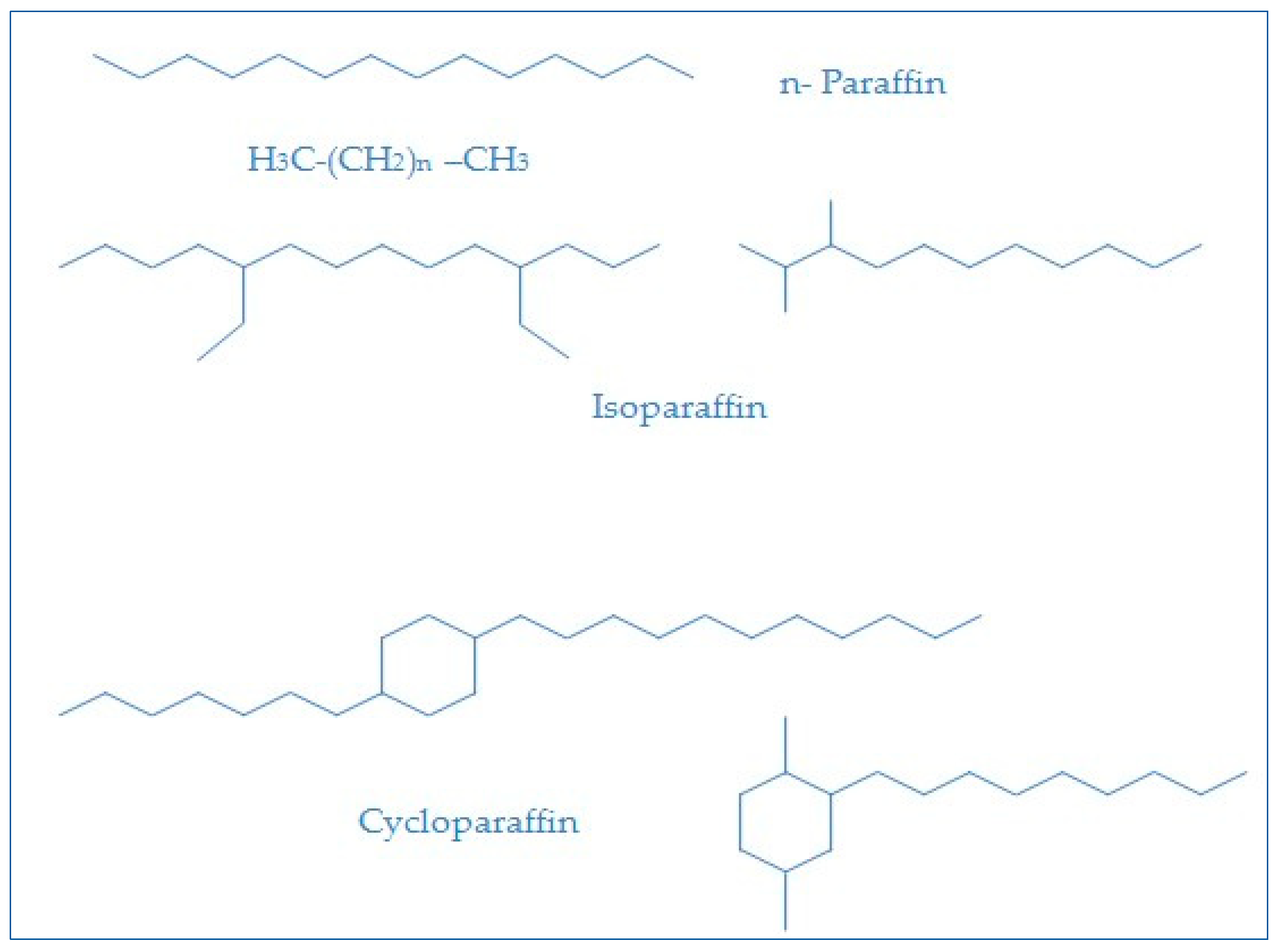
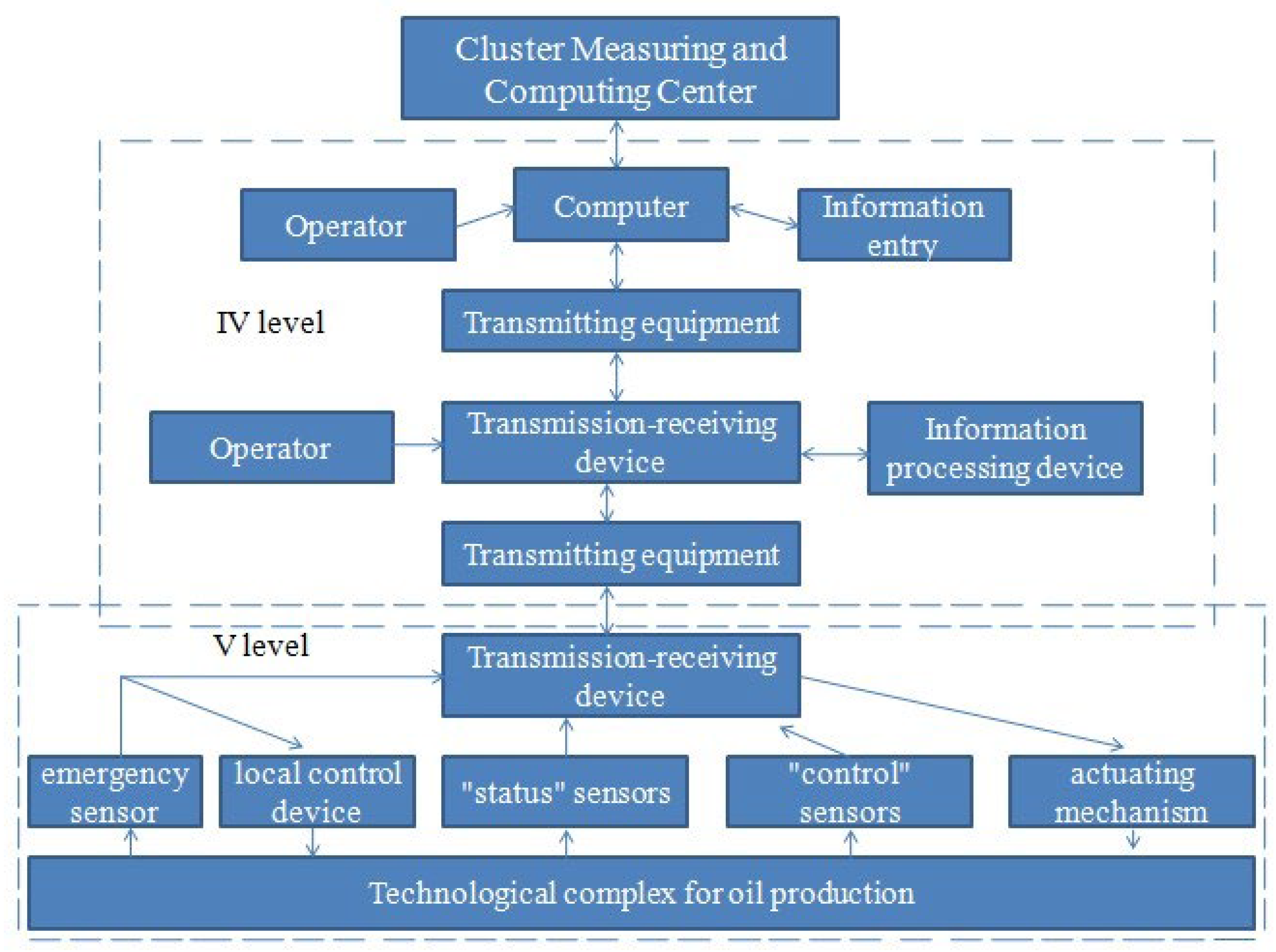
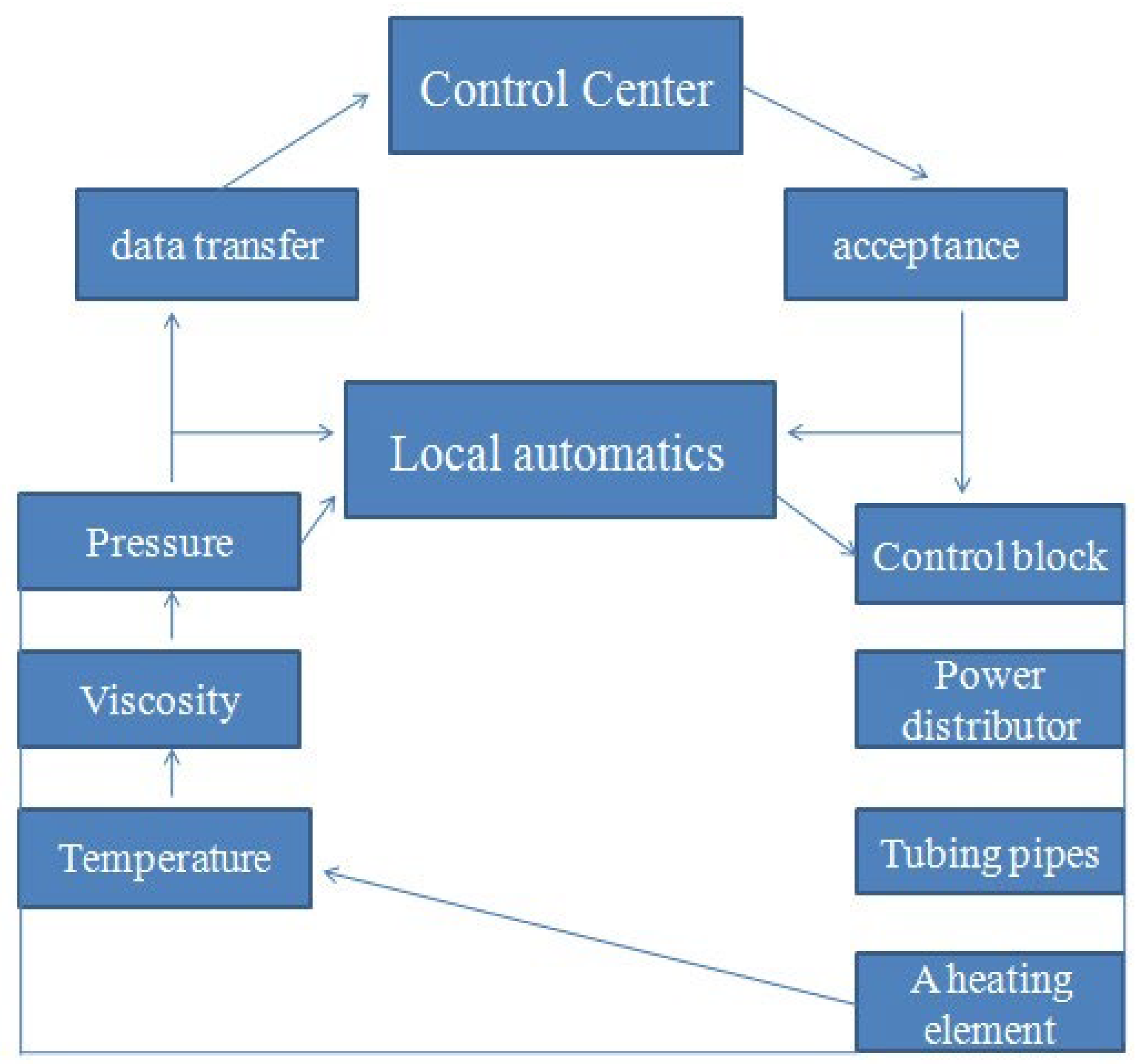
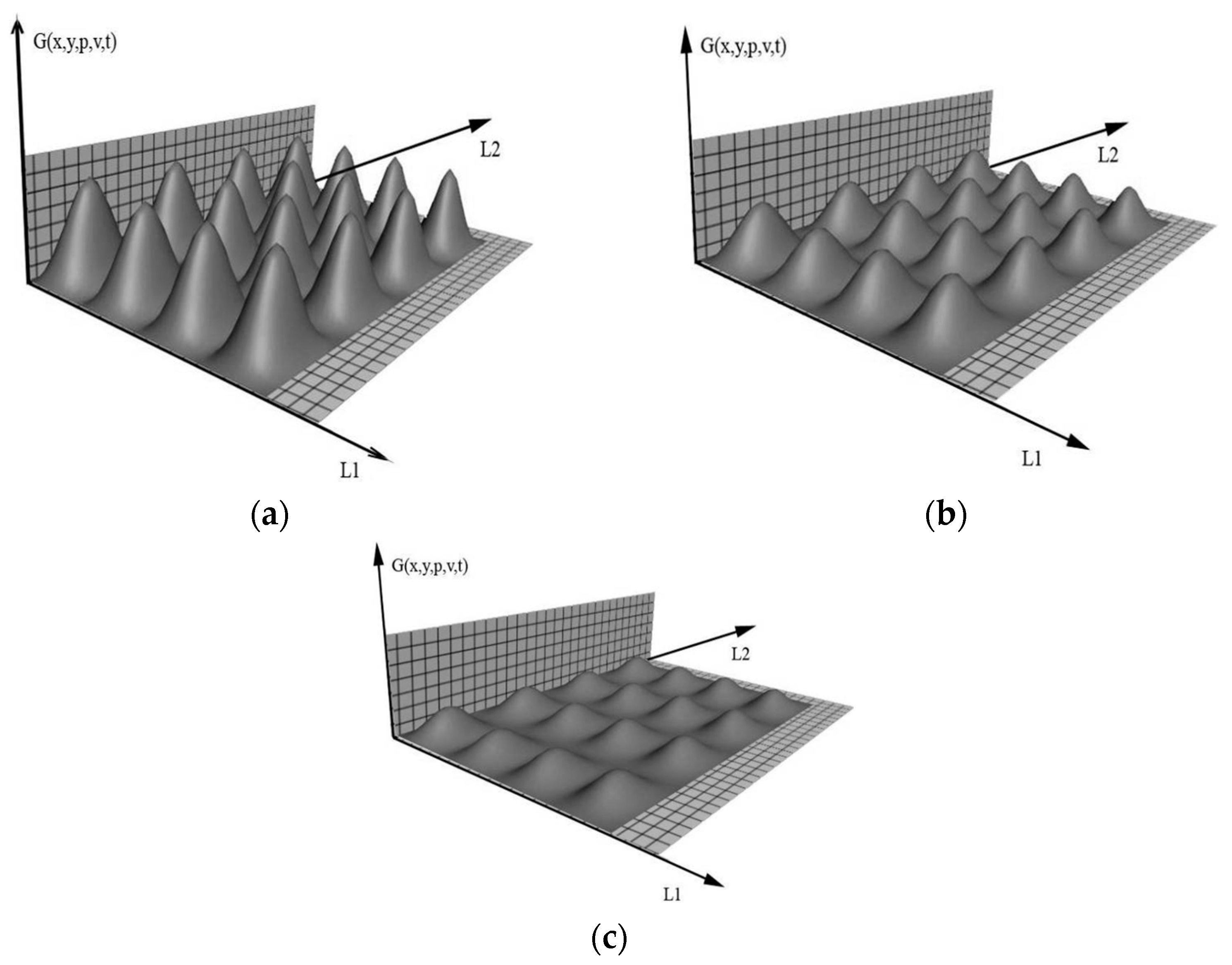
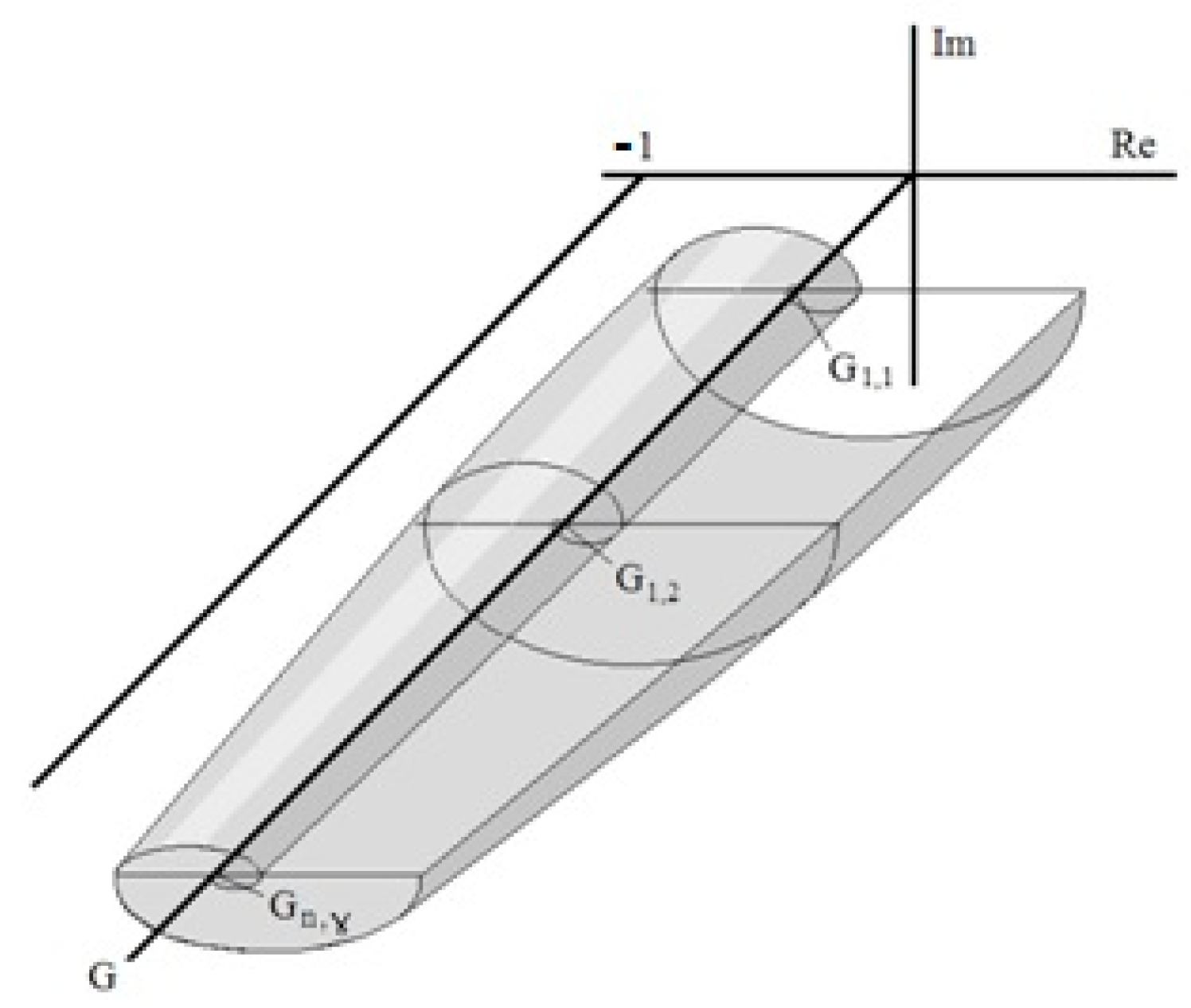
Publisher’s Note: MDPI stays neutral with regard to jurisdictional claims in published maps and institutional affiliations. |
© 2022 by the author. Licensee MDPI, Basel, Switzerland. This article is an open access article distributed under the terms and conditions of the Creative Commons Attribution (CC BY) license (https://creativecommons.org/licenses/by/4.0/).
Share and Cite
Ilyushin, Y.V. Development of a Process Control System for the Production of High-Paraffin Oil. Energies 2022, 15, 6462. https://doi.org/10.3390/en15176462
Ilyushin YV. Development of a Process Control System for the Production of High-Paraffin Oil. Energies. 2022; 15(17):6462. https://doi.org/10.3390/en15176462
Chicago/Turabian StyleIlyushin, Yury V. 2022. "Development of a Process Control System for the Production of High-Paraffin Oil" Energies 15, no. 17: 6462. https://doi.org/10.3390/en15176462
APA StyleIlyushin, Y. V. (2022). Development of a Process Control System for the Production of High-Paraffin Oil. Energies, 15(17), 6462. https://doi.org/10.3390/en15176462








